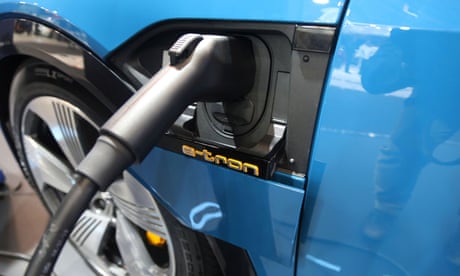- by foxnews
- 28 Mar 2025
EV incentives focused on urban centres leave rural Australians stranded with fossil fuels
EV incentives focused on urban centres leave rural Australians stranded with fossil fuels
- by theguardian
- 08 Jul 2022
- in news

Most EVs on the market are likely to have the battery range needed for those living long distances from urban centres, however Australian policy is currently geared only towards encouraging uptake among citydwellers, new research from the Australian National University has found.
This could leave remote Australians exposed to ever-rising prices for fossil fuels.
Though Australia has historically been slow to embrace electric vehicles, state and territory governments have introduced a range of incentives to encourage the transition over the past few years.
Most of these policies however have been focused on city drivers thanks to a widespread assumption that the limited range on electric vehicles makes them unsuitable for regional areas.
The ANU research has turned that assumption on its head by investigating whether electric car drivers in regional areas could make the journey to major service hubs in one trip.
In the analysis, researchers considered the Tesla Model S and the Audi e-tron 50 Quattro as both were 4WD vehicles already available on the Australian market with larger battery ranges.
They did not account for variables such as topography, sealed or unsealed roads and extreme heat which all may influence battery life.
The result was nine out of every 10 people living in regional Australia were within range of the nearest service hub and would be able to make a one-way trip without having to stop to charge.
With the right infrastructure installed at the destination, like fast chargers, most could charge their vehicle and easily make a return trip.
Dr Bjorn Sturmberg, research lead at the ANU Battery Storage and Grid Integration Program and co-author on the study says the result shows the tyranny of distance is not as much of an issue as previously thought in Australia.
Where solar rigs were installed at the point of origin in order to charge the cars, and to power-charging infrastructure along routes for the most remote locations, the benefits of electric vehicles were multiplied.
With the number of service stations having declined from 20,000 in the 1970s to 6,400 today, this would also boost energy security, especially among communities that have to ship or truck in supplies of diesel.
Sturmberg said the research highlights a blindspot among policymakers who have largely been focused on bringing electric vehicles to urban areas when the potential gains for regional people, including remote Indigenous communities are significant.
- by foxnews
- descember 09, 2016
Flight passenger says traveler sent $150 over Venmo in swap for aisle seat
A flight passenger says a fellow traveler who wanted to sit next to his friend paid $150 through Venmo to switch a middle seat for an aisle seat. Social media users joined the debate.
read more


